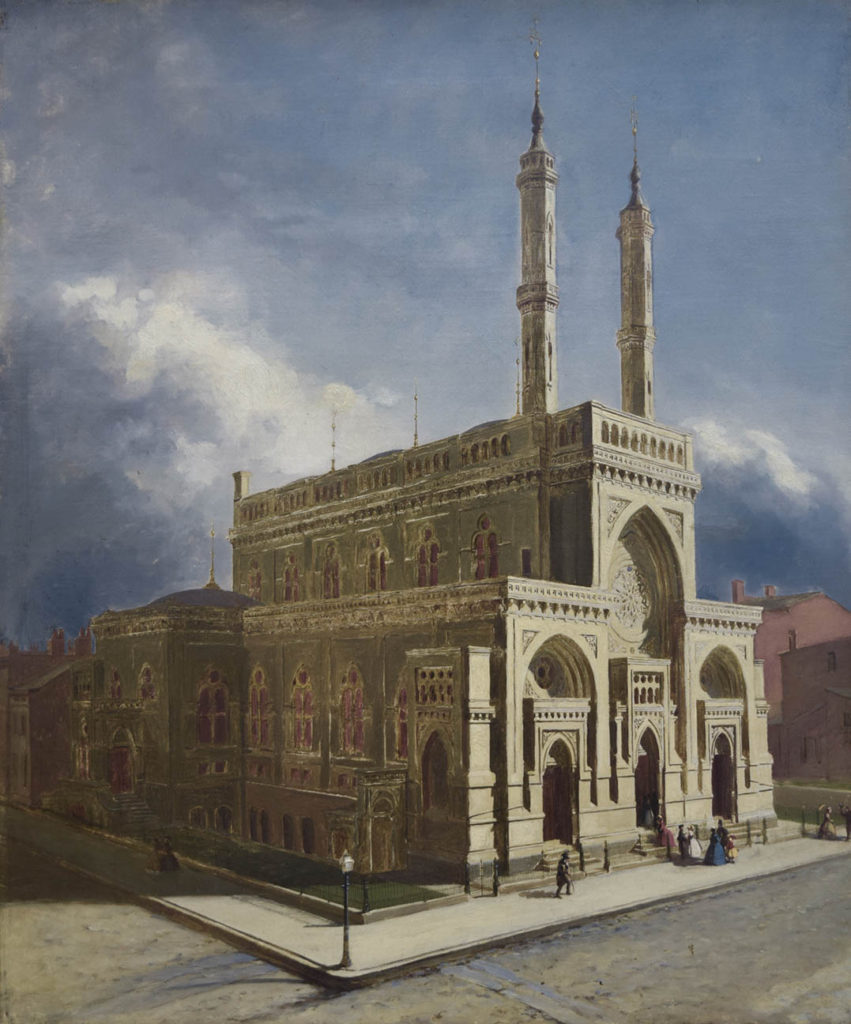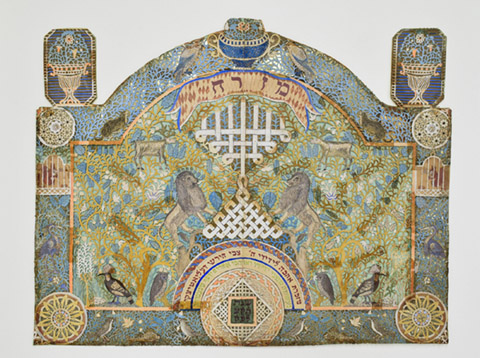Plum Street Temple
Henry Mosler (Germany 1841-1920 New York)
Cincinnati, OH 1866
Oil on canvas, h. 36 1/4 x w. 31 1/4 in.
USA, 1866
Signature: Verso “HMosler 1866 pinxit”
Cincinnati Skirball Museum, gift of Audrey Skirball Kenis, granddaughter of the artist, 41.259
Acclaimed for its Moorish-style decoration that became synonymous with synagogue architecture, this rendering of the façade of Plum Street Temple is one of Henry Mosler’s few works on a Jewish theme and verifies his connection to the Jewish community. Mosler immigrated to New York from Germany at the age of eight with his parents, who then settled in Cincinnati where the family established the Mosler Safe Company, a firm that would become one of the largest safe manufacturers in the country. Mosler studied in Cincinnati with genre and portrait painter James Henry Beard, and then in Dusseldorf, Germany and Paris, France. He returned to Cincinnati between 1866 and 1874, before making New York his home. Plum Street Temple, or Kahal Kodesh Bene Jeshurun, was the congregation of Rabbi Isaac Mayer Wise, who founded Hebrew Union College, as well as the Union for Reform Judaism and the Central Conference of American Rabbis in the last quarter of the nineteenth century. Mosler painted the edifice in its inaugural year. Designed by architect James Key Wilson in the Alhambra style from the Golden Age of Spanish Jewish history, it has been described as an architectural marvel of Byzantine and Moorish style. The bulding is on the National Register of Historic Places and was declared a National Historic Landmark in 1975.


